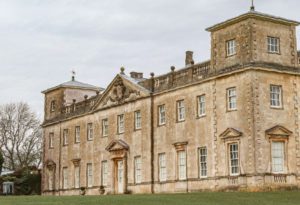The Ice House
“There ice, like crystal, firm and never lost,
Tempers hot July with December’s frost;”
From “On St James’ Park” by Edmund Waller 1661
Something lurks beneath the ground at Lydiard Park. It’s a relic from a bygone age, no longer necessary in this era of refrigeration. It’s the ice house.
Ice houses were underground structures that were built and used initially for the storage of ice and snow, and as a result, the preservation of food. The earliest ice pits were built in the medieval period but at the beginning of the 17th century, King James I commissioned two ice houses to a new design, one in Greenwich Park and another at Hampton Court. What distinguished these “modern” ice houses from their medieval predecessors was that they were brick-lined and cylindrical in shape, engineered to have a drain at the base so that the water could empty away as the ice slowly melted. With thick walls and a thatched roof, the ice houses were able to maintain a regular low temperature and ice could take up to 18 months to thaw.
The scientific and technological design of the ice house was improved during the reign of Charles II and by the eighteenth century it had become increasingly common for major houses in both London and the country to have their own icehouse. A spell of several hard winters towards the end of the 18th century also encouraged their use. The one at Lydiard probably dates from about 1743 when Sir John, 2nd Viscount St John spent his wealthy wife’s dowry on remodelling the mansion house and landscaping the grounds.
The Lydiard ice house is of the Cup and Dome variety, the most popular 18th century model and apparently the most expensive. Cited away from the house in the shade of trees the Lydiard ice house follows text book plans with a brick lined underground pit and domed roof to control the circulation of air. The better the brickwork the more successful and efficient the ice house operated. Such a luxurious facility reflected on the status of the families that owned it.
The ice would have been collected from the lake, cut into blocks and dropped into the pit of the icehouse, layered with straw to make removal easier. Not only was it used to preserve food for longer but it also became the fashion to use the ice in cooling drinks and for making cold confections in the kitchens. In the kitchen of the Royal Pavilion in Brighton there is a menu on display for a dinner dated 1817 and of the 22 sweets no less than 7 were made using ice.
A change came in the later 19th century when huge quantities of ice were sourced from Norway and North America to supply country estates and private ice wells in smaller domestic houses. By the end of the 19th century the invention of the refrigerator brought the ice trade to an end and brick-lined ice houses became obsolete.
